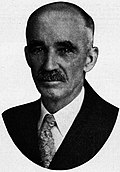November 4, 1930 | |||||||||||||||||
| |||||||||||||||||
 County results Green: 40–50% 50–60% 60–70% 70–80% 80–90% McCullough: 40–50% 50–60% >90% | |||||||||||||||||
| |||||||||||||||||
| Elections in South Dakota |
|---|
 |
The 1930 South Dakota gubernatorial election was held on November 4, 1930. Incumbent Democratic Governor William J. Bulow declined to run for re-election to a third term, instead opting to successfully run for the U.S. Senate. The Republican nomination was hard-fought and the primary was crowded; because no candidate received 35% of the vote, state law required that the nomination be decided at a state party convention. There, former State Senator Warren Green, the last-place finisher in the primary, defeated Secretary of State Gladys Pyle, the plurality winner. In the general election, Green faced D. A. McCullough, the state's Rural Credits Commissioner and the Democratic nominee. Despite Bulow's success in the preceding two elections, Green defeated McCullough by a decisive margin—even as Bulow himself was elected to the U.S. Senate.

